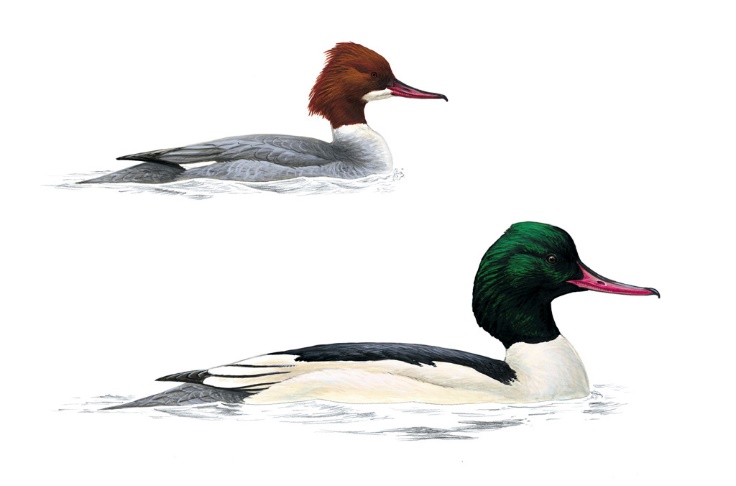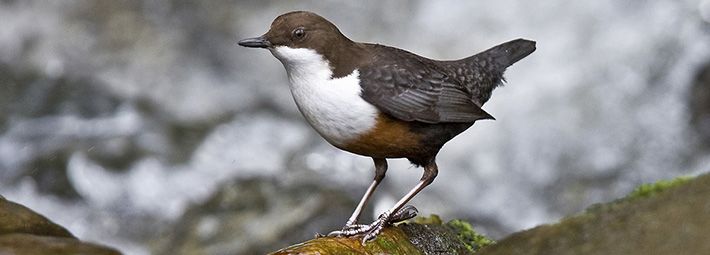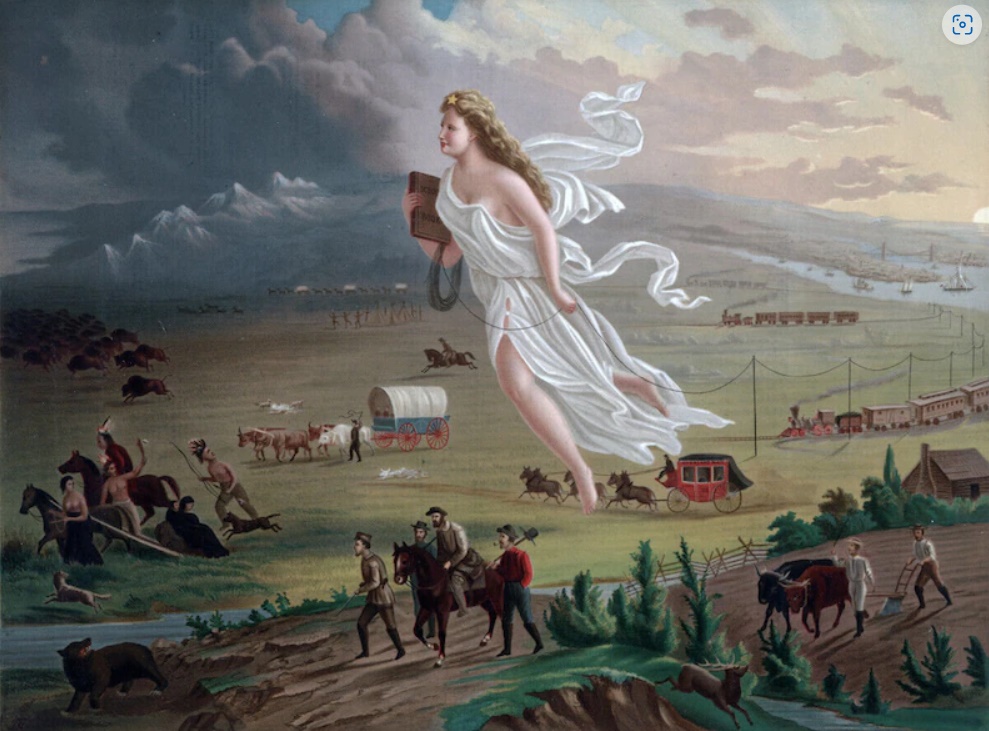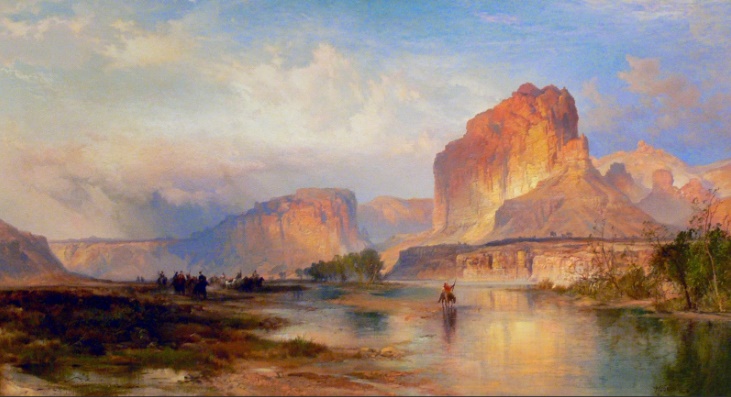Introduction
This edition of Forum is rather dominated by ‘society business’ but the reports on recent activities and on the forthcoming anniversary show how busy we are. In addition, the Committee have met on two occasions and have recruited Chris Nelson as an additional member. Chris will be taking over as editor of Forum and, after a few months of ‘treading water’, we can look forward to significant upgrades over the coming months. We very much want Forum to be written by members as well as read by them and so we will be trying to expand our writership as well as our readership.
In this edition, we have two reports on recent Society activities, Stuart Sharp’s lecture and Roger Mitchell’s course. Peter Firth brings you up to date with plans to celebrate the 150th anniversary of the first University Extension Courses in Southport back in 1874.
As well as reporting, it is important that Forum should be creative and so you will find a fascinating (and true) story from Christine Vasey. Two short poems, one well known and the other rather less so, are included to remind us that Spring in the air and that there will be much activity to enjoy. Appropriately, we start with information about two future SUES events.
Hospice: ‘No Thanks or Yes Please’
Dr Karen Groves, Former Medical and Education Director at Queenscourt Hospice
All Saints’ Church Hall, Friday 31st March 2023, 2:30pm
Dr Karen Groves, who started out life as a local GP, was a founder member of Queenscourt Hospice and was its Medical & Education Director and a local NHS Consultant in Palliative Medicine until semi-retirement in March 2022. She describes her talk as follows:
‘An individual’s visceral reaction to the mention of hospice is dependent upon their imagined or experiential perception of what a hospice is and what it does. Where has that come from? This talk will be a whistle stop tour of the story of the hospice and palliative care movement nationally, locally and internationally, delving into the past, considering the present and looking to the future. (It inevitably carries an emotional health warning!)’
Free refreshments will be served at the end of the meeting and the Committee very much hope that you will be able to attend.
In 2022, our chairman, Alan Potter, introduced us to the wonders of the human brain in a fascinating course that worked equally well for scientists and non-scientists. This year he is offering an introduction to Chemistry and details are given below.
Uncovering the Mystery in Chemistry
6 Sessions: May 8, 15, 22, 25th (Thursday); June 5th, 8th (Thursday)
Course fee: £30
Please note that this course has 4 of the usual Monday morning meetings (May 8th, 15th, 22nd and June 5th) but also 2 Thursday morning meetings (May 25th and June 8th). This is necessary to fit in with the availability of the speaker and the room and gives us a chance to experiment with a slightly different course structure.

It is fascinating why chemistry, an aspect so fundamental to everything in our lives, and indeed life itself, is a subject we often know so little about since leaving school. In this course, simple examples and everyday language will be used to explain the nature of chemistry from the emergence of the first particles and substances to the nuclear and micro-world we live in today.
This journey will recognise the early experiments and new discoveries of alchemists and chemists to highlight the struggle through which the human race has sought to uncover the mysteries of chemistry in order to use and control it. In the latter sessions, aspects of everyday life from food and farming, to drugs and dyes and from glue and gouache to nylons and nature itself will be used to help to reveal the exciting world of chemistry.
The course has already recruited well but there is still time for current members to enrol before the first lecture on 8th May by contacting Rob Firth, our membership secretary. Payment (£30) can be made by cheque or bank transfer.
If you are sending a bank transfer, please email Rob at suesmembers74@gmail.com to advise him that payment has been made. Upon payment confirmation/receipt, Rob will confirm by email to you.
Southport University Extension Society: 150th Anniversary
As you may have seen on our website (southportues.com), the opening sentence talks of being “proud of [our] 125-year history”, based on being founded in 1896. However, last November, almost by chance, I discovered that university extension courses have been taking place in Southport since 1874! This means that, in 2024, we can celebrate our 150th anniversary – a very rare moment in the history of any organisation, let alone one dedicated to external, university quality education.
I also discovered that histories were produced to celebrate the 25th, 80th and 100th anniversaries of our Society. It seems, therefore, more than appropriate to attempt to repeat this, as part of much wider celebrations, with a history of our 150th! Moreover, we believe that, of the very many such like societies that grew up in the late 19th century, Southport’s university extension society, SUES, is the last one remaining! Really something to be celebrated and promoted!
Having been asked to undertake the task of producing an updated record of SUES’s past, my intention is to incorporate part of the earlier histories. But I will be particularly looking at the last fifty years. However, there do seem to be gaps in what we know about this period. For obvious reasons, I’m unlikely to find anyone in the current membership list who was around in 1974, but we are fortunate to have members who have been part of SUES for 20+ years.
With this in mind and irrespective of the length of your association, I would like to invite all members to provide any significant recollection of their time with SUES. This might involve details of courses, lecturers, events and even paperwork/artefacts. Even things that might seem unimportant to you could well be useful in building up a wider picture, when put together with other information/details.
One very important aspect of my enquiries over the last ten years is a period when, as I understand it, SUES was on the point of closing, both because of the low number of members and limited financial resources.
Some of our current members may well be aware that the financial standing and ability for SUES to continue came as the result of a most generous legacy provided by Miss Muriel K Wild. Over a short time, this enabled SUES to move from a very modest, annual four or five lecture format to the current offer of three courses of six to ten weeks, together with six individual talks, as well as other events. This was facilitated, after 2018-19, by incorporating into SUES, the University of Liverpool’s Continuous Education Southport outreach programme.
Without Muriel Wild’s generosity, I am not sure that SUES would still exist today. Therefore, any background information to this major development would be very helpful. If you feel you have anything that might be relevant to the last fifty years, please contact me on: firth_peter@yahoo.co.uk.
In addition to marking the history of SUES, our committee is looking to organise a series of events to celebrate this momentous anniversary in Southport and beyond, from where many members have come.
We are still very early in the planning process and nothing concrete has yet been agreed. However, the committee is considering holding events at venues, such as the Town Hall, the Atkinson, amongst others.
Members are invited to make suggestions or give ideas as to how/what this unique celebration of our Southport based organisation might take.
It will be a long period before any such similar celebration is likely to take place for SUES! Let’s make the most of this one!
Peter Firth
River Birds – Dr Stuart Sharp
A Report of the Meeting Held on Friday 3rd March
This well-attended meeting began with our Chairman, Alan Potter paying tribute to John Sharp, both for his work for SUES and for his wider contributions to education.
It was appropriate that our lecturer was Stuart Sharp, John’s nephew. Stuart is a Senior Lecturer at Lancaster University working in animal ecology and having a special research interest in river birds. Stuart began by telling us that his interest in ornithology had been sparked by excursions with his uncle, particularly in the Lake District. These were serious visits and all the more enjoyable for that. Questions were asked and had to be answered so that further questions could be developed.
Back at home, weighty tomes were consulted and specialist bibliographies were perused. Stuart told us that he had been amazed that researchers could spend so much time on such restricted and specific topics but he now found himself doing exactly the same thing. His lecture provided the perfect answer as to why it was worth spending ‘all day and every day’ studying one particular species in one particular place over a ten-year period.

He began by explaining why the study of river birds is so important. Rivers are among the most diverse and the most threatened ecosystems and river birds are ‘flagship species’ indicating river quality. Before introducing the dipper, the subject of his current research, he provided us with ‘tasters’, shorter research projects completed within a maximum of three years. All three projects were designed to address gaps in our knowledge. The common sandpiper spends most of the year out of England in Africa but modern technology makes it possible to track the birds to their specific destination in coastal West Africa.
The knowledge gap for his next example, the sand martin, related to nest sites and required ‘feet on the ground’ research. Sand martins nest in burrows and the project wanted to know whether depth of burrow affects breeding success. Evidence showed that it does. Deeper burrows are better protected and produce more surviving chicks. So far, so good but as well as the predictable, the research came up with the quite inexplicable, because it was found that in deeper burrows the level of carbon dioxide was extremely high and the birds really ought to be dead. Back to the drawing board and more research.
In his final example, Stuart told us of a project that took us to the heart of his work – scraping bird poo off rocks into bags and on to the lab. The poo in question was from the goosander, a bird that is not beloved of anglers or commercial fish farmers because its diet is almost entirely fish. The poo samples identify the DNA of various species of fish consumed. Although at least one criminal goosander seemed to rely on ‘ornamental goldfish’, the overall picture was more encouraging because it revealed that marine fish rather than river fish made up the bulk of the diet and these fish came from the wild.
Having given us the flavour of his work, Stuart then focused on his main research project, a long-term study of dippers. Dippers are present in many parts of the world but here in England they will be white throated dippers, unusual and interesting birds. They get their food by swimming and diving, often in fast flowing water. They therefore need dense plumage, strong muscles, powerful claws and highly oxygenated blood. As well as all this, both males and females find time for complex songs and an expanding repertoire.
They live in river valleys, often in countryside as attractive as that found in the Yorkshire Dales National Park, where Stuart’s research work takes place in the area around Sedbergh. His is an ongoing project that began in 2012 but he is also able to draw on meticulous records from the 1950s and 1960s made by Peter Mawby, then a Sedbergh schoolboy. Sixty years later, and now retired, he is still an active participant in the project. The area supports a breeding population of between 30 and 50 pairs of dippers and all young bird are ringed after nine days. Thereafter, they can be identified and monitored throughout their lives. The amount of data produced is enormous and throws light on topics that Stuart described as both pure and applied.

His example of pure research was trying to understand when and why dippers, unusually for river birds, are song birds with a complex vocabulary. We were able to hear their songs and were introduced to the methods used to analyse them. As an example of applied research with more general application Stuart has studied the effects of winter and spring flooding on dippers in particular and river quality in general. These floods are increasing in frequency and intensity; storm Desmond back in 2016 had very serious consequences. A river in spate is bad news for dippers and they may be more successful if they use nest boxes placed high above the river.
However, most dippers seem to prefer traditional nests, constructed from moss and the size of a football. Stuart’s pictures showed that these are not easy to spot even in open terrain. Finding and reaching them in favoured territory close to the river is a major challenge. Lasting memories of his talk will include those pictures which showed him paddling an inflatable dinghy, clambering up ladders and even inching his way behind waterfalls. For him at least, ornithology is more than cosy hides and a pair of binoculars. These distinctly damp activities must be undertaken at this time of year (March and April) and long-range weather forecasts are not encouraging.
In giving her vote of thanks, Christine Vasey wished him and his dippers good fortune in 2023 and congratulated him on a stimulating and instructive talk that had been much enjoyed by members. She concluded with the ultimate accolade; ‘John would have been proud of you.’
Roger Mitchell
Art and Architecture of the American West
Roger Mitchell’s Course
On 9th of January as the memories of Christmas faded into the past, we came together for the first lecture in Roger’s course. It was a pleasure to meet old friends and to welcome some new members to their first SUES course. It was lovely to hear that they found a friendly welcome and lots of good humour and enthusiasm. The hall was ideal for the lectures being spacious and also warm during the winter months.
As soon as we heard Roger’s opening remarks that “the West is about myth as well as history, geography as well as geology and the pre-historic west is about archaeology and anthropology,” we knew we were in for far more than an art & architecture course, and so it proved.
The course was well structured and during the early weeks we learnt a lot about American history as it pertained to the West. “What was the West?” Roger asked and we were brought to realise that what was meant by ‘the West’ changed over time as explorers went further and further in to the country. Roger skilfully used maps to show the importance of geography in determining how the continent was explored and populated, as well as explaining the changes in the importance of Spain, England, France and the Colonists over time. Who knew Napoleon sold Louisiana to the newly independent United States?
We touched on the native American people, the Ancestral Pueblo, charting their move from pit dwellings in 750AD to stone masonry in the first millennium and ‘visiting’ the beautiful structures of the Chaco valley which were deserted by 1300. We learned how the local population was decimated not only by raids from rival tribes but by diseases imported from Europe to which the local people had no resistance.
We went with the Spanish Jesuits as they established the Mission trail along the California coast between 1769 and 1823, we accompanied Lewis & Clarke on their expedition in 1805, reflecting on whether the make-up of the group was appropriate. They didn’t have anyone with medical knowledge!
You’ll notice I haven’t mentioned any artists yet, which is a little unfair as Roger did refer to artists and architects in all the lectures. In week 4, we met the “Mountain Men” and looked at art by George Catlin, Karl Bodmer and Alfred Jacob Miller, all of whom captured the disappearing world of the native Indians.

We used the painting above, “American Progress” by John Gast, to explore the themes of Getting There, End of the Open range, Establishing Control and Settling the Land, before moving on to the work of the cowboy artists, Remington and Russell, and finally spending time with Thomas Moran, who we discovered is one of Roger’s favourite artists. In addition to the slides, we were able to see a number of prints of Moran’s work from Roger’s own collection and learn why one of his paintings hangs in the gallery of his birth place, Bolton. The picture below is by Thomas Moran, but this one is in Fort Worth, Texas rather than Bolton, Lancashire.

Having spent time on art, the course finished with a road trip through California and along Route 66 to Tulsa, Oklahoma, stopping in at properties built by Getty, Hearst, Waite Philips and Adamson. We questioned how sustainable the expansion of Las Vegas was given its desert location and the change in water supply caused by climate change and before ending at the Golden Gate bridge, we visited Frank Lloyd Wright’s winter residence at Taliesin West, designed by him, but largely built by his students.
It was a fantastic 8 weeks. The lectures prompted much discussion and home reading and brought us from winter to the first signs of spring. As one member said in their feedback “My knowledge of the American Wild West and America in general was practically non-existent. I have found the course really interesting and very enjoyable and I certainly feel I have learnt a great deal from it. I’m already looking forward to next year’s!”
Thank you, Roger.
Mary Ormsby
Roger’s provisional title for a January – March 2024 Course is ‘Colonial and Post Colonial America – History, Architecture and Art’.
Crime Doesn’t Pay or So They Say!
My phone rang. ‘Is that you, Christine? Thank goodness I’ve got hold of you. Where are you?’
‘Hi Alison. I’m at work, of course.’
‘I’m at my wit’s end. Can you play tennis this evening?’
‘Well, probably but I don’t usually play on a Wednesday because it’s match night for the 2nd team. You’re the captain so you should know!’
‘Exactly. We’re desperate for a fourth lady for tonight’s match against Parbold. Helen has sprained her ankle and can’t play. Can you play? You’re my last hope.’
I suppose she thinks she’s flattering me. ‘Alison, you know I’m a 4th team player.’
‘Well never mind about that! This is crucial game for the 2nd team. If we don’t turn up with four men and four women, we forfeit the match and Parbold will overtake us in the league table with maximum points.’
‘OK then.’ (Said with great reluctance). ‘6 o’clock at the club house.’
‘No, it’s not a home game. We’ve got to be in Parbold for 6 so we’re meeting in the club car park at 5 and sharing cars. Can you fit three others in your car?’
‘I don’t finish work until 5.’
‘Well, we can’t be late. You’ll just have to bunk off work early.’
So that’s when I found myself heading out of my office and speeding home to get changed into my tennis kit. I reached home about 4 and unlocked the front door, first with the mortice key and then with the Yale key. Same process with the inner door, first the mortice key but nothing happened. The door didn’t budge. The mortice failed to engage with the lock. Was the lock jammed? What was going on? I finally realised that the door was bolted on the inside. But how on earth had I managed that morning to slam in the bolt on the inside and yet emerge and lock the door from the outside? Not possible! The inner bolt had to be locked by somebody in the house. Had one of the family come home unexpectedly and barricaded themselves in? I rang the bell to make sure. No response. Or was it a burglar? No sign of a break in but time to get help!
I went next door to Caroline the barrister and Richard the judge who were of the joint learned opinion that it was a break in. ‘I’ll come with you’, said Richard picking up a cricket bat and a golf club. We managed with some difficulty to shin over the brick wall that divides our two gardens and saw straight away that the utility room window had been smashed with a brick and the back door was open. Richard, brandishing his weapons, went in through the open back door. I followed nervously. Nothing had been touched downstairs. ‘I’m going upstairs’, said Richard. I followed nervously.
On entering my bedroom, a scene of chaos; drawers pulled out and contents strewn on the bed, the wardrobe wide open and rummaged in and bedside cupboards toppled over. Then I saw that the gold Victorian bracelet, a gift from my late mother-in-law which I normally wore every day, was not in its dish on top of the chest of drawers but mercifully, the silver-backed hairbrush which my godmother had given me at my christening was still in its place next to the empty bracelet dish. We checked the other bedrooms which were untouched apart from one open drawer.
‘I think they heard you trying to get in and they got scared and ran off via the back door which they opened from the inside. I noticed you’d left the key in the lock. They’re just opportunist thieves, probably two of them, most likely drug addicts, desperate for a fix, looking for cash and portable items like jewellery. Silver hair brushes won’t get them very far. You’d better call the police.’
‘And Alison.’ I added. ‘She won’t be pleased.’
An hour later, two burly police women arrived and wanted to know if I needed the services of a victim support officer. I didn’t think I did. The policewomen dabbed the window frame with fingerprint powder and looked carefully at the shards of glass for blood stains, possible DNA evidence. They said the break-in had all the hall marks of an opportunist crime, probably drug addicts, most likely two of them just looking for cash or portable objects like jewellery which they could sell quickly. They did not hold out much hope of finding either the culprits or my mother-in-law’s gold bracelet.
The tedious aftermath of a burglary followed, the boarding up of the window, the installation of a burglar alarm, a safe and a spiked railing on the top of the back gate, the listing of missing items for the insurance company and photographing the valuables that the thieves had missed. The latter task took some time and my daughter appeared to offer moral and physical support. The gold bracelet was the major item on my insurance list but where was my husband Frank’s Rolex watch? It must have been stolen. To find out its value, I enquired at the Rolex stockist in Preston where I worked. A submariner Rolex watch, early 1960s, as featured in the first James Bond film.
I was told that these watches were collectors’ items and worth several thousand pounds. No way the insurance company would cough up anything like that! However, a stroke of luck! My daughter found her dad’s watch in a drawer which the burglars hadn’t opened. ‘It doesn’t work! I’ll take it to the guy in Preston and get it mended. He says these Rolexes are valuable.’
The jeweller was impressed. ‘Yes. A very early submariner. We can’t fix it here but we can send it to Zurich for repairs and it will cost £1,200, more or less. However, if your husband doesn’t wear this watch very much, you might consider selling it. You’d get a very good price for it at auction.’
‘It’s worthless! I said, ‘It doesn’t work!’
‘It’s certainly not worthless,’ said the jeweller, ‘if a collector is after this particular watch he won’t care if it works or not. Now Birmingham is the best place for watch auctions and there’s one coming up in a couple of months at Fellows, one of the best watch auctioneers in the city. So put a reserve of £5,000 on it and I’m certain it will sell.’
Sadly, my husband is in residential care home. We agreed that £5000 for a broken Rolex would come in very handy, so with my husband’s permission, the jeweller was commissioned to despatch the watch to the Birmingham auction house. A few weeks later, a glossy catalogue arrived with Frank’s Rolex given the star billing. No mention was made of the fact that it didn’t go. I had to go to Kiev (as we called it then) for a couple of weeks on university business and forgot about the auction. On my return, there was a message on my work computer from the auction house saying that the Rolex had been sold.
I phoned them immediately. ‘I think there’s a typo on the email you sent me.’
‘I’m not surprised you think that, Madam. We were amazed too.’
‘What happened?’
‘Well, bidding was going along nicely and you would certainly have reached your reserve price and then two telephone bidders came in and a real bidding war started and the price just went up and up. We couldn’t believe it’
‘So that figure I thought was a typo is correct?’
‘It certainly is, Madam. £26,000. That’s a top price for a watch of this vintage.’
‘But it doesn’t go!’
‘Not important, Madam.’ There was auctioneer’s commission and VAT to pay but still a very tidy sum left over. Who would have thought that a burglary could be so profitable?
A short corollary to this tale. When Frank was a teenager, 16 or 17, he became involved (most willingly) with a married woman in her 30s whose husband was a wing commander in the RAF. The wronged husband realised what was going on and one day approached Frank as he was leaving the lady’s boudoir. The wing commander rolled up his sleeve revealing a muscular arm and a Rolex watch which he removed. Frank thought that he was about to receive a well-deserved punch but the Wing Commander was more wily than that. ‘I’ll give you this watch if you promise me, you will never ever come near my wife again.’
Frank promised, took the proffered watch and ran. He kept the Rolex and the promise too, as far as I know.
A True Story
Christine Vasey
Two Short Poems About Spring
Sharp winter now dissolved, the linnets sing,
The grateful breath of pleasing Zephyrs bring
The welcome joys of long desired spring.
The galleys now for open sea prepare,
The herds forsake their stalls for balmy air,
The fields adorned with green the approaching sun declare.
In shining nights the charming Venus leads
Her troop of Graces, and her lovely maids
Who gaily trip the ground in myrtle shades.
Lady Mary Wortley Montagu (1689 – 1762) Translated from the Odes of Horace
Loveliest of trees, the cherry now
Is hung with bloom along the bough,
And stands about the woodland ride
Wearing white for Eastertide.
Now, of my threescore years and ten,
Twenty will not come again,
And take from seventy springs a score,
It only leaves me fifty more.
And since to look at things in bloom
Fifty springs are little room,
About the woodlands I will go
To see the cherry hung with snow.
A.E.Housman (1859 – 1936) From ‘A Shropshire Lad’
Contacts
Chair: Alan Potter
alanspotter@hotmail.com
07713 428670
Secretary: Roger Mitchell
rg.mitchell@btinternet.com
01695 423594 (Texts preferred to calls)
Membership Secretary: Rob Firth
suesmembers74@gmail.com
01704 535914
Forum Editor: Chris Nelson
chris@niddart.co.uk
07960 117719
Facebook: facebook.com/groups/southportues
See our archive for previous editions of the SUES Forum!